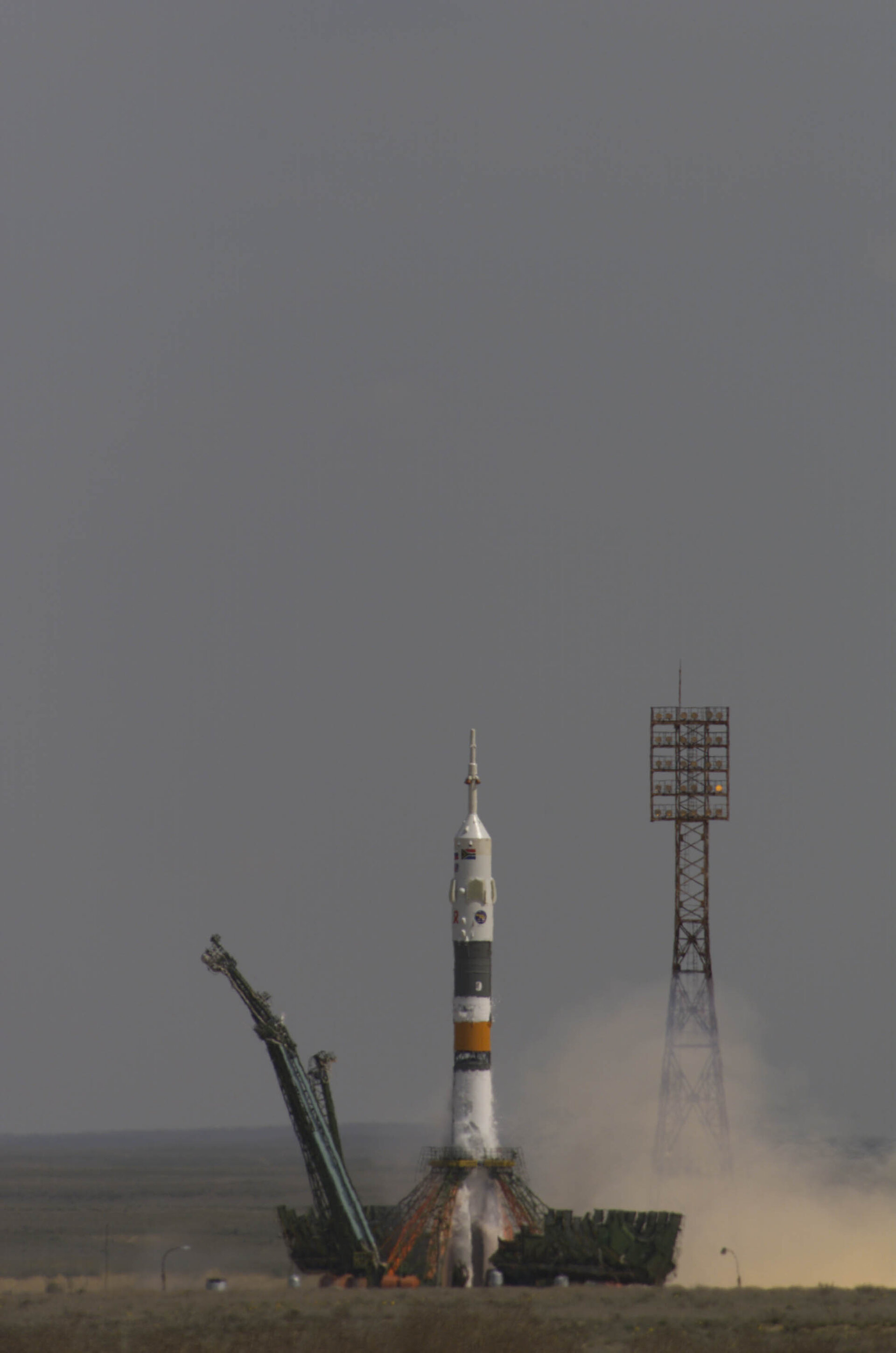Marco Polo makes orbit
25 April 2002, Baikonur, Kazakhstan. Soyuz Mission TM-34 Marco Polo streaked upward from a launch pad of the Baikonur Cosmodrome today at 12:26 local time (08:26 CEST, 06:26 GMT) precisely, exactly as scheduled. On board were Mission Commander Yuri Gidzenko, Flight Engineer Roberto Vittori of the European Astronaut Corps and Flight Participant Mark Shuttleworth from South Africa.
The weather was perfect. Only a faint haze of high cloud masked an otherwise clear sky, and there was no sign of the icy wind that has been sweeping the Kazakhstan steppe for weeks. On the ground, a small crowd cheered as the Soyuz’ motors lit up and the 42-metre rocket between its upward acceleration above a searing flame of kerosene burning in liquid oxygen. ESA representatives were present, of course, as well as a strong contingent from Vittori’s native Italy, a group of enthusiastic South Africans and everyone in Baikonur who could snatch some time from their busy work schedules.

In less than a minute, the Soyuz had hurtled out of sight. But there was the usual tension as Mission Control counted off stage separations as well as the rocket’s increasing height and speed until finally, just 540 seconds after lift-off, the spacecraft entered a stable orbit about 275 km above the Earth. All systems were functioning normally, and everyone on the ground could relax in the warm spring sunshine.
In space, the Soyuz crew could relax, too, at least for a moment. Freed at last from force of their rocket’s fierce acceleration – it had peaked at around five gravities – they could enjoy the experience of weightlessness. But they still had plenty of work to do, checking on-board systems and communications links, and preparing for the first of a series of manoeuvres that will match orbits with the International Space Station and should lead to a successful docking on Saturday.

Marco Polo is technically a 'taxi mission'. A Soyuz craft is always docked to the ISS, where it serves as the station’s lifeboat. But the little spacecraft’s stored propellants and power systems deteriorate over time, and every six months the docked Soyuz must be replaced. Marco Polo’s crew will leave their Soyuz with the ISS and return to Earth in ten days’ time in the current lifeboat.
These taxi trips are an operational necessity for the ISS. But they also provide an excellent opportunity for additional scientific work, outside the station’s main workload. On this flight, Roberto Vittori will oversee four important experiments for ESA. CHIRO (Crew Health Investigation on Reduced Operability) will study how an astronaut’s hand and finger grip is altered by weightlessness. ALTEINO (Anomalous Long Term Effects on Astronauts) will investigate the effects of cosmic particles on the human body. The aptly named VEST will test low weight, low volume fabrics that could increase the comfort of station personnel – and look good at the same time, which will do no harm to morale. The BMI (Blood pressure Measurement Instrument) is an unobtrusive method of obtaining constant blood pressure measurements. Widely used on Earth, it will receive its space baptism on this mission.















 Germany
Germany
 Austria
Austria
 Belgium
Belgium
 Denmark
Denmark
 Spain
Spain
 Estonia
Estonia
 Finland
Finland
 France
France
 Greece
Greece
 Hungary
Hungary
 Ireland
Ireland
 Italy
Italy
 Luxembourg
Luxembourg
 Norway
Norway
 The Netherlands
The Netherlands
 Poland
Poland
 Portugal
Portugal
 Czechia
Czechia
 Romania
Romania
 United Kingdom
United Kingdom
 Slovenia
Slovenia
 Sweden
Sweden
 Switzerland
Switzerland




























